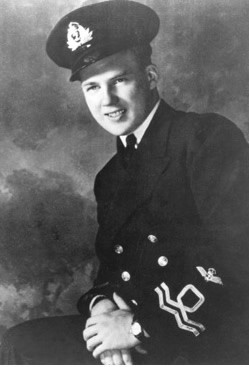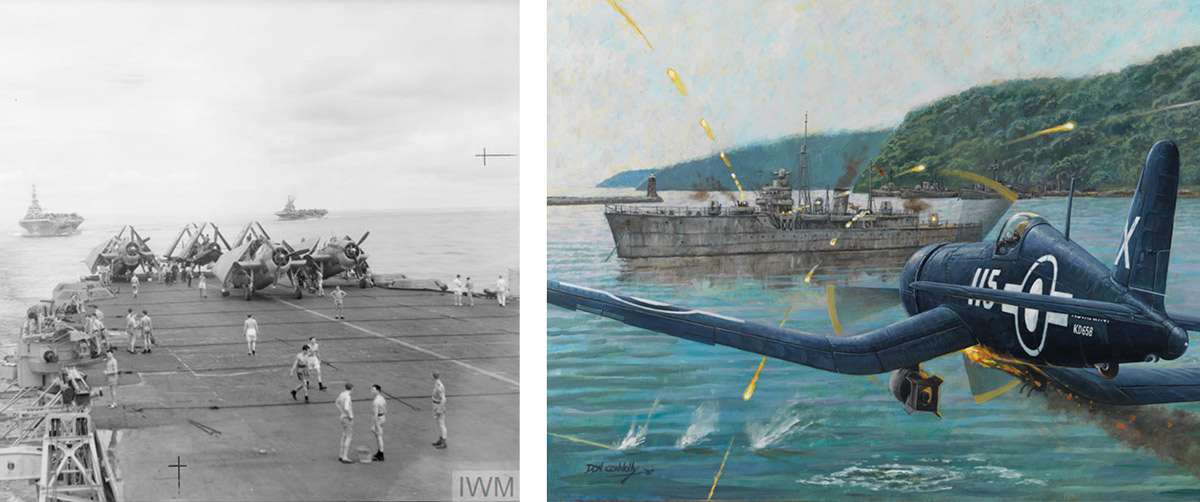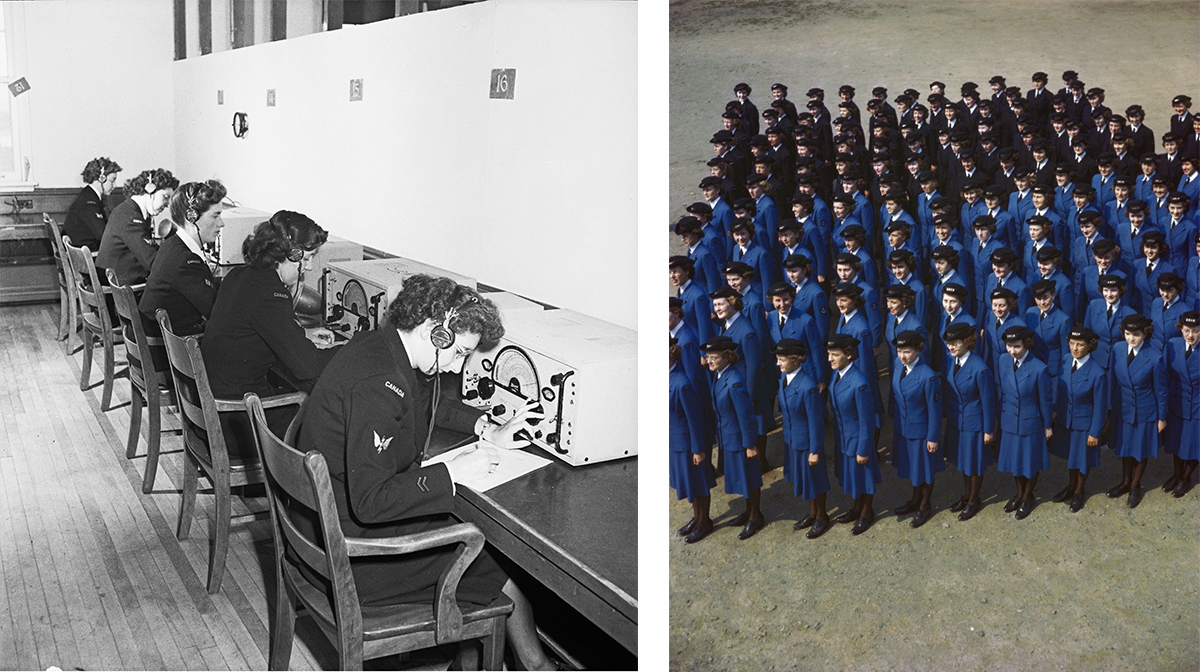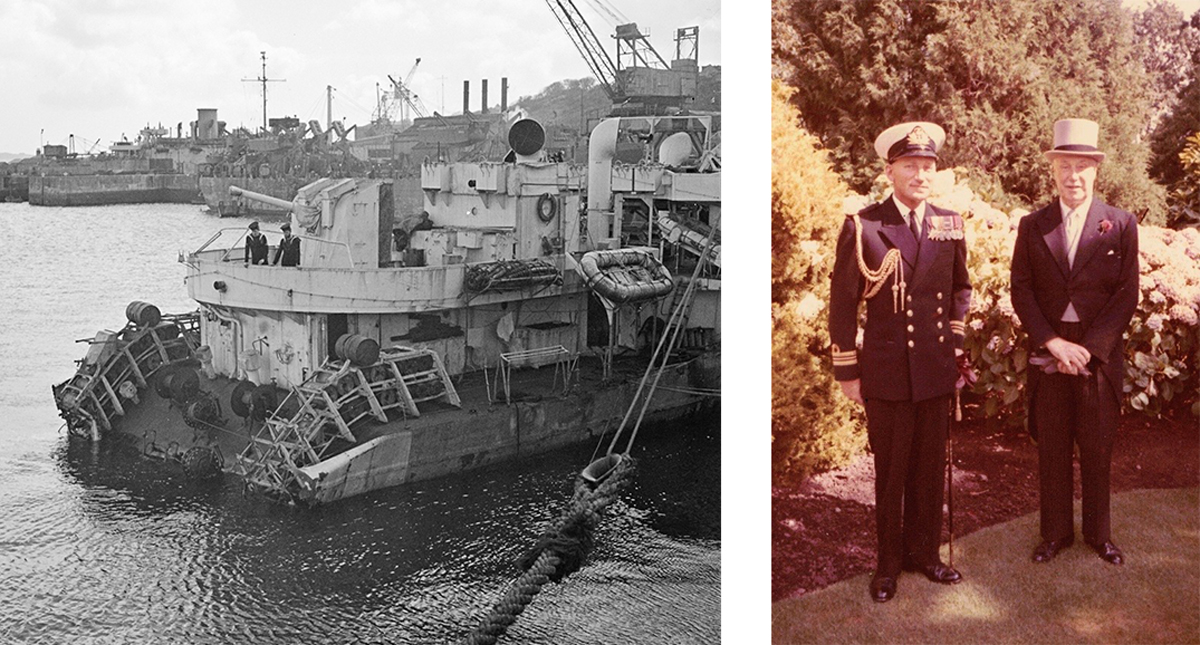
Hometown Heroes
Fort Rodd Hill and Fisgard Lighthouse National Historic Sites
Thousands of men and women living near Fort Rodd Hill, or with a connection to this place, served with the Canadian forces in the World Wars and other conflicts. Join us in commemorating individuals who made unique contributions to Canada’s Second World War efforts.
Honouring Robert Hampton Gray: Hometown Hero

Robert Hampton Gray
1917-1945
Born and raised in British Columbia, Robert Hampton “Hammy” Gray, enrolled in university intending to pursue a career in medicine; however, the Second World War (1939-45) changed these plans. A year into the conflict, Gray joined the Royal Canadian Naval Volunteer Reserve (RCNVR). He served on loan with the Royal Navy, eventually becoming an aviator of its Fleet Air Arm.
Following extensive training and flight experience, Lieutenant Gray was appointed senior pilot with 1841 Naval Air Squadron in 1944, serving aboard the aircraft carrier HMS Formidable. During a series of air attacks on the German battleship Tirpitz, Gray distinguished himself through his flying skills and courage. From the Atlantic, Formidable then sailed to the Pacific for the Battle of Okinawa against Imperial Japanese forces. In July 1945, Gray sank a Japanese destroyer earning him a Distinguished Service Cross.
Days before the war’s end, Gray died leading a daring attack on Onagawa Bay. He was posthumously awarded the Victoria Cross, the Commonwealth’s highest decoration for valour. A courageous, cheerful, and well-loved leader, his death came as a sharp blow to his comrades-in-arms. Today, his inspiring leadership lives on through the Royal Canadian Navy’s sixth Arctic and Offshore Patrol Vessel named in his honour.


Alice Adams
b. 1922
As the Second World War (1939-45) intensified, the Navy began recruiting Canadian women for volunteer service. With the creation in 1942 of the Women’s Royal Canadian Naval Service (WRCNS), more than 6,700 “Wrens” as they were called, stepped in to play a range of shore trades thus freeing sailors for active sea duty. One early recruit was Alice Adams (née Rutherford).
While a teacher at an elementary school in rural Saskatchewan at the start of the war, Adams saw a recruitment ad that brought her to Saskatoon where she enlisted among the first group of wireless telegraphists. After completing basic military training then multiple specialized signal courses, she was posted to top-secret wireless stations near the cities of Ottawa, Moncton, and Victoria.
Her duties included copying enemy naval traffic and tracking the location of U-boats. Such information was vital to Allied intelligence and helped steer merchant convoys away from danger. Upon war’s end, Adams came in direct contact with victims, processing liberated Canadian and British POWs returning from the Pacific.
Achieving the rank of Petty Officer, Adams’ service came to an end in 1946 when she was demobilized. Her wartime experiences led to lifelong friendships and gave her a self-confidence that she thereupon always exuded as a civilian.


Trevor Cole Shuckburgh
b. 1922
Raised on a farm in Alberta, Trevor Shuckburgh grew restless to see the world. He seized his chance at 17 when he joined the Royal Canadian Navy during the Second World War (1939-45). He enlisted as a Boy Seaman and trained at HMCS Naden in British Columbia.
His first posting at sea was aboard HMCS Prince Henry, which intercepted two German merchant ships in the Pacific Ocean off South America. Next, he served aboard minesweepers off the coast of Newfoundland, and later in the English Channel and Bay of Biscay, all the while keeping up his studies and working hard for a promotion to petty officer.
In June 1944, Shuckburgh took part in Operation Neptune during the Normandy landings, aboard the frigate HMCS Teme. While chasing an enemy U-boat, he and his crewmates suffered a nighttime collision with an Allied escort carrier that nearly cut their ship in half. The following year, Shuckburgh earned a Commander-in-Chief Commendation for helping save Teme from sinking when the 20-metre stern section was lost during a torpedo attack.
With the help of the Royal Canadian Legion, Shuckburgh completed his education following the war and transitioned to the officer ranks, retiring in Victoria after a 32-year naval career.

- Date modified :